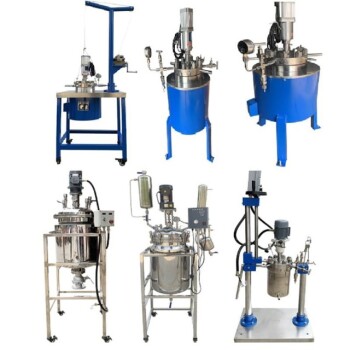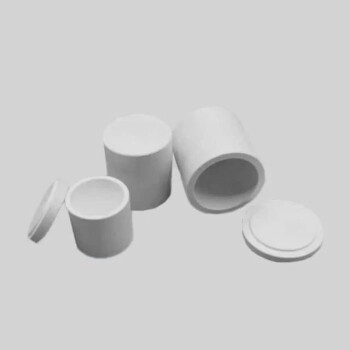اختيار جهاز التفاعل وأجهزة التقليب
أوعية التفاعل
أوعية التفاعل، والمعروفة أيضًا باسم المفاعلات، هي حاويات متخصصة مصممة لتسهيل التفاعلات الكيميائية في ظل ظروف محكومة. تأتي هذه الأوعية في مجموعة واسعة من التكوينات والمواد والأحجام لاستيعاب الاحتياجات المتنوعة للمعالجة الكيميائية. وتشمل أوعية التفاعل الشائعة الاستخدام قوارير مستديرة القاع، والكؤوس، والقوارير المخروطية، ويتم اختيار كل منها بناءً على عوامل مثل حجم التفاعل وظروفه وخصائص المواد المتفاعلة.
يعد اختيار وعاء التفاعل أمرًا بالغ الأهمية لأنه يؤثر بشكل مباشر على كفاءة التفاعل وسلامته. على سبيل المثال، غالبًا ما يتم استخدام أوعية الضغط السميكة الجدران للتفاعلات التي تتطلب ضغطًا عاليًا، مما يضمن تخفيف المخاوف المتعلقة بالسلامة. ويمتد تعدد استخدامات هذه الأوعية ليشمل تطبيقاتها في مختلف العمليات الكيميائية، مثل التقطير وتصنيع المكونات الصيدلانية الصيدلانية النشطة والتبلور والاستخلاص والمعالجة اللاحقة.
يمكن تخصيص أوعية التفاعل، المصنوعة من مواد مثل الزجاج أو الفولاذ المقاوم للصدأ، لتلبية متطلبات محددة، مما يوفر خيارات غير محدودة تقريبًا للتكيف. تضمن هذه المرونة قدرة الوعاء على تحمل البيئة الكيميائية والظروف التشغيلية للتفاعل، وبالتالي تحسين عملية التخليق الشاملة.
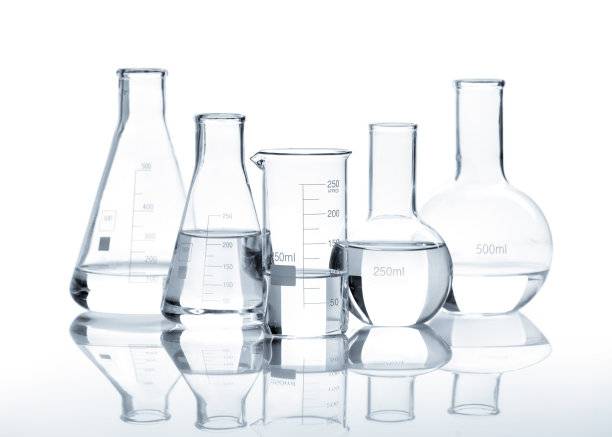
معدات التسخين
عند اختيار معدات التسخين لتفاعلات التخليق العضوي، من الضروري مراعاة كل من ظروف التفاعل وحجم الوعاء. يمكن أن يؤثر اختيار طريقة التسخين بشكل كبير على كفاءة التفاعل ونتائجه.
أنواع معدات التسخين
- ألواح التسخين: مثالية للتفاعلات التي تتطلب توزيعًا موحدًا للحرارة على سطح مستوٍ. وهي مفيدة بشكل خاص للأوعية الصغيرة والمتوسطة الحجم.
- حمامات الزيت: مناسبة للحفاظ على درجات حرارة مستقرة على مدى فترات طويلة. غالبًا ما تستخدم حمامات الزيت للتفاعلات التي تتطلب تحكمًا دقيقًا في درجة الحرارة.
- سترات التسخين: وهي مصممة للالتفاف حول الوعاء، مما يوفر نقل حرارة ثابت. وهي متعددة الاستخدامات ويمكن أن تستوعب مجموعة من أحجام الأوعية.
العوامل المؤثرة في الاختيار
- درجة حرارة التفاعل: سيحدد نطاق درجة الحرارة المطلوبة نوع معدات التسخين اللازمة. على سبيل المثال، يفضل استخدام حمامات الزيت للتفاعلات ذات درجات الحرارة العالية.
- حجم الوعاء: ستحدد أبعاد وعاء التفاعل طريقة التسخين المناسبة. قد تستفيد الأوعية الأصغر حجمًا من ألواح التسخين، بينما قد تتطلب الأوعية الأكبر حجمًا سترات تسخين.
- كفاءة نقل الحرارة: توفر طرق التسخين المختلفة مستويات متفاوتة من كفاءة نقل الحرارة. فحمامات الزيت، على سبيل المثال، توفر حرارة أكثر اتساقًا من ألواح التسخين.
من خلال اختيار معدات التسخين المناسبة بعناية، يمكن للباحثين تحسين تفاعلاتهم التخليقية، مما يضمن الكفاءة والسلامة على حد سواء.
أجهزة التقليب
عند إجراء تفاعلات التخليق العضوي، يعد اختيار جهاز التحريك أمرًا بالغ الأهمية ويتم تحديده في المقام الأول من خلال حجم التفاعل واللزوجة. التحريك المغناطيسي والتحريك الميكانيكي هما الطريقتان الأساسيتان المستخدمتان، ولكل منهما مجموعة من المزايا والتطبيقات الخاصة به.
التحريك المغناطيسي
غالبًا ما يُفضل التقليب المغناطيسي في التفاعلات الأصغر حجمًا، وهي عادةً تلك التي تُجرى في أوعية تتراوح أحجامها من بضعة ملليلترات إلى لتر. وتنطوي هذه الطريقة على قضيب تقليب مغناطيسي يتم تدويره بواسطة مجال مغناطيسي خارجي يولده جهاز تقليب مغناطيسي. إن بساطة التقليب المغناطيسي وصغر حجمه يجعلانه مثاليًا للتفاعلات ذات اللزوجة المنخفضة إلى المعتدلة. وبالإضافة إلى ذلك، فإن التقليب المغناطيسي غير جائر، مما يقلل من خطر التلوث ويسهل زيادة الحجم للأحجام الأكبر.
التقليب الميكانيكي
بالنسبة للتفاعلات التي تنطوي على أحجام أكبر أو لزوجة أعلى، فإن التقليب الميكانيكي هو الطريقة المفضلة. وتوفر أجهزة التقليب الميكانيكية، مثل أجهزة التقليب العلوية أو أجهزة التقليب المروحية، تحكمًا أكبر في سرعة التقليب ويمكنها التعامل مع المواد الأكثر لزوجة. هذه الأجهزة مجهزة بأنواع مختلفة من الدفاعات، بما في ذلك الدفاعات ذات الشفرات المسطحة والتوربينات والمراوح المروحية، وكل منها مصمم لتحسين الخلط في ظروف مختلفة. يعتبر التقليب الميكانيكي مفيدًا بشكل خاص في التفاعلات التي تتطلب خلطًا قويًا أو في الحالات التي يكون فيها وسط التفاعل عالي اللزوجة.
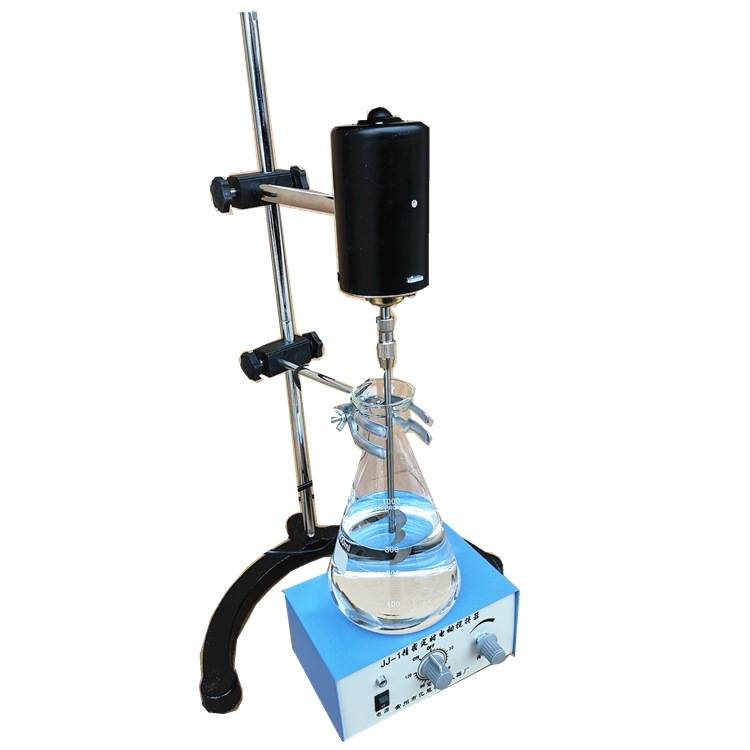
وباختصار، فإن الاختيار بين التقليب المغناطيسي والميكانيكي ليس مجرد مسألة تفضيل بل تمليه المتطلبات المحددة للتفاعل، بما في ذلك الحجم واللزوجة. من خلال النظر بعناية في هذه العوامل، يمكن للباحثين ضمان ظروف الخلط المثلى، وبالتالي تعزيز كفاءة تفاعلات التخليق العضوي وتكرارها.
اعتبارات أخرى
تعتبر الشفافية والمقاومة الكيميائية أمرًا بالغ الأهمية عند اختيار الأدوات الزجاجية لتفاعلات التخليق العضوي. هذه الخصائص مهمة بشكل خاص للتفاعلات الحساسة للضوء أو التي تنطوي على مواد أكالة. تسمح شفافية الزجاج بالمراقبة المستمرة لتقدم التفاعل، مما يضمن إمكانية معالجة أي تغييرات أو انحرافات على الفور. هذه الرؤية لا غنى عنها للتفاعلات التي تكون فيها تغيرات اللون أو تكوين الراسب أو غيرها من المؤشرات البصرية ضرورية لتحديد حالة التفاعل.
وعلاوة على ذلك، فإن المقاومة الكيميائية للأدوات الزجاجية ضرورية للحفاظ على سلامة بيئة التفاعل. يمكن أن تؤدي المواد المسببة للتآكل إلى تدهور المواد الأقل مقاومة، مما يؤدي إلى تلوث أو تغيير ظروف التفاعل. ويوفر الزجاج، بمقاومته الكيميائية القوية، منصة مستقرة لمثل هذه التفاعلات، مما يقلل من مخاطر الآثار الجانبية غير المرغوب فيها.
على سبيل المثال، في التفاعلات الحساسة للضوء، يمكن أن يمنع استخدام الأواني الزجاجية الكهرمانية أو غير الشفافة التدهور الكيميائي الضوئي، مما يضمن استمرار التفاعل على النحو المنشود. وبالمثل، بالنسبة للتفاعلات التي تنطوي على أحماض أو قواعد قوية، تضمن المقاومة الكيميائية للزجاج بقاء وعاء التفاعل سليمًا، مما يمنع التسريبات أو الأعطال الهيكلية التي يمكن أن تعرض التجربة للخطر.
وخلاصة القول، إن اختيار الأدوات الزجاجية ذات الشفافية العالية والمقاومة الكيميائية ليست مجرد مسألة ملاءمة بل هي عامل حاسم في نجاح وسلامة تفاعلات التخليق العضوي.
اختيار مذيبات التفاعل
إذابة المذيبات المتفاعلة
يعد اختيار المذيبات خطوة حاسمة في عملية التخليق العضوي، حيث إنها تؤثر بشكل مباشر على قابلية ذوبان المواد المتفاعلة والكفاءة الكلية للتفاعل. تشمل المذيبات شائعة الاستخدام الأثير وثنائي ميثيل فورماميد (DMF) ورباعي هيدروفوران (THF) والماء، ولكل منها خصائص مميزة تؤثر على ملاءمتها للتفاعلات المختلفة.
| المذيب | الخصائص الرئيسية | حالات الاستخدام النموذجية |
|---|---|---|
| الأثير | غير قطبي، نقطة غليان منخفضة | تفاعلات تتطلب ظروفًا معتدلة |
| DMF | قطبي، درجة غليان عالية | تفاعلات قطبية، بدائل محبة للنواة |
| THF | قطبي، درجة غليان متوسطة | تفاعلات ديلز-ألدر، كواشف غريغنارد |
| الماء | قطبي، ثابت عازل كهربائي مرتفع | تفاعلات التحلل المائي، العمليات الكيميائية الحيوية |
غالبًا ما يتم تحديد اختيار المذيب من خلال قابلية ذوبان المتفاعلات والمتطلبات المحددة لنوع التفاعل. على سبيل المثال، تعتبر المذيبات غير القطبية مثل الأثير مثالية للتفاعلات التي تنطوي على متفاعلات غير قطبية، في حين أن المذيبات القطبية مثل DMF مفضلة للتفاعلات القطبية التي تتطلب قابلية ذوبان وثبات عاليان. وبالإضافة إلى ذلك، يجب مراعاة قدرة المذيب على التحكم في درجة حرارة التفاعل ومعدله، وكذلك دوره في فصل الناتج وتنقيته.
باختصار، يعد الاختيار الحكيم للمذيبات أمرًا ضروريًا لتحسين ذوبان المتفاعلات وضمان نجاح تفاعلات التخليق العضوي.
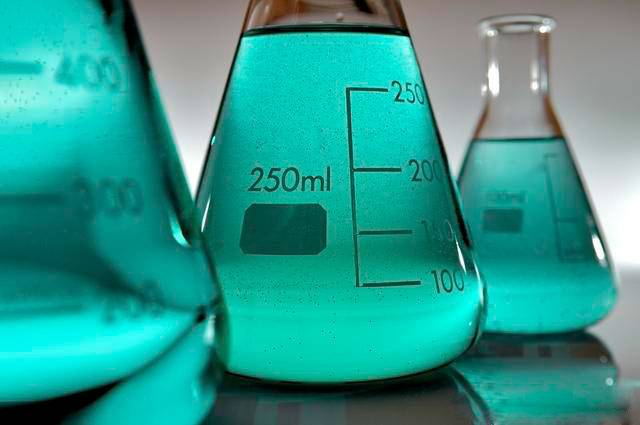
التحكم في درجة الحرارة
يعد التحكم في درجة الحرارة جانبًا حاسمًا في تفاعلات التخليق العضوي، وتلعب المذيبات دورًا محوريًا في هذه العملية. المذيبات المتطايرة، على وجه الخصوص، بارعة في امتصاص الحرارة، والتي يمكن تسخيرها للحفاظ على درجة حرارة التفاعل أو ضبطها. وتعد هذه الخاصية مفيدة بشكل خاص في التفاعلات التي تتطلب تنظيمًا دقيقًا لدرجة الحرارة، حيث إنها تسمح بتبديد الحرارة الزائدة دون حدوث تغيرات مفاجئة في درجة الحرارة.
على سبيل المثال، يشيع استخدام المذيبات مثل الأثير وTHF نظرًا لتطايرها العالي وقدرتها على امتصاص الحرارة. عند استخدام هذه المذيبات، يمكنها أن تخفف من التقلبات في درجات الحرارة بشكل فعال، مما يضمن استمرار التفاعل بسلاسة ضمن نطاق درجة الحرارة المطلوبة. وهذا مهم بشكل خاص في التفاعلات شديدة الحساسية للتغيرات في درجات الحرارة، حيث يمكن أن تؤدي حتى الانحرافات الطفيفة إلى نواتج جانبية غير مرغوب فيها أو فشل التفاعل.
علاوة على ذلك، يمكن أن يؤثر اختيار المذيب أيضًا على معدل امتصاص الحرارة أو إطلاقها. المذيبات ذات السعات الحرارية النوعية الأعلى، مثل الماء، قادرة على امتصاص المزيد من الحرارة دون تغيرات كبيرة في درجة الحرارة. وهذا يجعلها مثالية للتفاعلات التي تولد كميات كبيرة من الحرارة، حيث يمكنها المساعدة في الحفاظ على بيئة درجة حرارة مستقرة.
وباختصار، فإن استخدام المذيبات في التحكم في درجة الحرارة لا يتعلق فقط بامتصاص الحرارة؛ بل يتعلق بالحفاظ على بيئة تفاعل مستقرة ومضبوطة. ومن خلال اختيار المذيب المناسب بعناية استنادًا إلى خصائص امتصاص الحرارة، يمكن للباحثين ضمان سير تفاعلاتهم بكفاءة وإنتاج النواتج المطلوبة.
تغير معدل التفاعل
يمكن لخصائص المذيب المستخدم في تفاعل التخليق العضوي أن تؤثر بشكل كبير على معدل التفاعل. وتلعب خاصيتان أساسيتان - القطبية واللزوجة - دورًا حاسمًا في هذا السياق.
يمكن للقطبية، التي تشير إلى توزيع الشحنة الكهربائية في الجزيء، أن تسرّع أو تبطئ معدل التفاعل. في المذيبات القطبية، من المرجح أن تتفاعل الأنواع المشحونة في المذيبات القطبية، مما يسهل تكوين الحالات الانتقالية وبالتالي تسريع التفاعل. وعلى العكس من ذلك، قد تعيق المذيبات غير القطبية هذه التفاعلات، مما يؤدي إلى معدلات تفاعل أبطأ.
من ناحية أخرى، تتعلق اللزوجة بمقاومة المذيب للتدفق. تعني اللزوجة الأعلى عادةً معدلات انتشار أبطأ للمواد المتفاعلة، مما قد يعيق التفاعل. وعلى العكس من ذلك، تسمح المذيبات الأقل لزوجة بانتشار أسرع، وبالتالي تعزيز معدل التفاعل.
| الخاصية | التأثير على معدل التفاعل |
|---|---|
| القطبية | يسرع أو يبطئ بناءً على تفاعلات الشحنة |
| اللزوجة | تبطئ مع ارتفاع اللزوجة بسبب انخفاض الانتشار |
يسمح فهم هذه التأثيرات للكيميائيين بضبط تفاعلاتهم عن طريق اختيار المذيبات المناسبة، وبالتالي تحسين ظروف التفاعل لتحقيق النتائج المرجوة.
فصل المنتجات وتنقيتها
تلعب المذيبات دورًا محوريًا في فصل المنتجات وتنقيتها في التخليق العضوي. وتحكم فعاليتها في المقام الأول عدة آليات رئيسية:
-
الذوبان: يمكن للمذيبات أن تذيب مكونات معينة من خليط التفاعل بشكل انتقائي، مما يسهل عزلها. على سبيل المثال، يمكن للمذيبات القطبية مثل الماء أو الإيثانول أن تذيب المركبات الأيونية، في حين أن المذيبات غير القطبية مثل الهكسان فعالة للجزيئات العضوية.
-
التبخير: يمكن تبخير المذيبات المتطايرة بسهولة، تاركةً وراءها المنتج المطلوب. هذه الطريقة مفيدة بشكل خاص لعزل المركبات ذات نقطة الغليان المنخفضة. يشيع استخدام تقنيات مثل التبخير الدوار والتقطير البسيط لهذا الغرض.
-
الاستخلاص: ينطوي الاستخلاص السائل-السائل على استخدام مذيبين غير قابلين للامتزاج لفصل المكونات بناءً على قابليتها للذوبان. تُستخدم هذه التقنية على نطاق واسع في الصناعات الدوائية والغذائية لتنقية المركبات العضوية.
-
القطبية: يمكن أن تؤثر قطبية المذيب على عملية الفصل. على سبيل المثال، في الفصل الكروماتوغرافي، تحدد قطبية الطور الثابت والطور المتحرك زمن احتباس المكونات المختلفة، مما يسمح بفصلها بفعالية.

تضمن هذه الآليات مجتمعة أن المنتج النهائي لا يتم فصله عن خليط التفاعل فحسب، بل يتم تنقيته أيضًا لتلبية المواصفات المطلوبة.
تعديل ظروف التفاعل
تلعب المذيبات دورًا محوريًا في ضبط ظروف التفاعل، لا سيما في تنظيم الأس الهيدروجيني والقوة الأيونية. هذا التنظيم أمر بالغ الأهمية لتفاعلات محددة حيث يمكن أن تؤثر البيئة بشكل كبير على النتيجة. على سبيل المثال، في تفاعلات الاستبدال النوكليوفيلي، يمكن أن يؤدي الأس الهيدروجيني للمذيب إما إلى تنشيط أو تعطيل المادة المحببة للنيوكليوفيل، وبالتالي التأثير على معدل التفاعل والانتقائية.
علاوة على ذلك، يمكن للقوة الأيونية للمذيب تعديل نشاط المحفزات واستقرار المواد الوسيطة. في التفاعلات المحفزة للمعادن، يمكن أن يؤدي وجود أيونات معينة إما إلى تعزيز أو تثبيط النشاط الحفزي، مما يتطلب اختيار المذيب بعناية للحفاظ على القوة الأيونية المثلى.
| نوع التفاعل | دور المذيب | مثال المذيب |
|---|---|---|
| الاستبدال النيوكليوفيلي | ينظم الأس الهيدروجين لتنشيط/تعطيل النيوكليوفيل | الماء، DMF |
| التفاعلات المحفزة للمعادن | تعديل القوة الأيونية لنشاط العامل الحفاز | THF، أسيتونيتريل |
باختصار، لا يقتصر الاختيار الحكيم للمذيبات على إذابة المواد المتفاعلة فحسب، بل يتعلق أيضًا بخلق بيئة تدعم ظروف التفاعل المرغوبة، مما يضمن تخليقًا فعالًا وانتقائيًا.
تسلسل الجرعات للتفاعلات الكيميائية
إضافة المذيبات
تنطوي الخطوة الأولية في العديد من تفاعلات التخليق العضوي على الإضافة الدقيقة للمذيب. وتعد هذه الخطوة التأسيسية حاسمة لعدة أسباب، أهمها ضمان ذوبان المتفاعلات بالكامل وتوزيعها بشكل موحد، وهو أمر ضروري لتحقيق ظروف التفاعل المثلى. واختيار المذيب ليس اعتباطيًا؛ إذ يجب أن يكون متوافقًا مع المتفاعلات، مما يسهل تفاعلها مع الحفاظ على بيئة التفاعل المرغوبة.
على سبيل المثال، غالبًا ما يتم اختيار مذيبات مثل ثنائي ميثيل فورماميد (DMF) ورباعي هيدروفوران (THF) نظرًا لقدرتها على إذابة مجموعة واسعة من المركبات العضوية. لا تساعد هذه المذيبات في إذابة المواد المتفاعلة فحسب، بل تلعب أيضًا دورًا مهمًا في التحكم في درجة حرارة التفاعل. يمكن للمذيبات المتطايرة، مثل ثنائي إيثيل الأثير، أن تمتص الحرارة، مما يساعد على الحفاظ على درجة حرارة تفاعل مستقرة.
وعلاوة على ذلك، يمكن أن تؤثر خواص المذيب، مثل القطبية واللزوجة، بشكل كبير على معدل التفاعل. غالبًا ما تعزز المذيبات القطبية تفاعل المواد المتفاعلة القطبية، في حين أن المذيبات غير القطبية قد تعمل على استقرار المواد الوسيطة غير القطبية. كما يمكن أن تؤثر لزوجة المذيب أيضًا على كفاءة الخلط، وهو أمر بالغ الأهمية للتفاعلات التي تتطلب تلامسًا دقيقًا بين المتفاعلات.
باختصار، تعد إضافة المذيب عملية دقيقة تمهد الطريق لتفاعل ناجح. من خلال ضمان التوافق والذوبان المناسب، تخلق المذيبات بيئة يمكن أن تتفاعل فيها المتفاعلات بفعالية، وبالتالي تعزيز الكفاءة الكلية ونتائج التخليق.
إضافة المتفاعلات
يتم إدخال المواد المتفاعلة في وعاء التفاعل مع مراعاة دقيقة لخصائصها الفردية والمتطلبات المحددة لظروف التفاعل. يمكن أن يؤثر تسلسل الإضافة بشكل كبير على كفاءة التفاعل ونتيجته. عادة، يضاف المذيب أولاً لخلق بيئة متجانسة تضمن التوافق مع المتفاعلات.
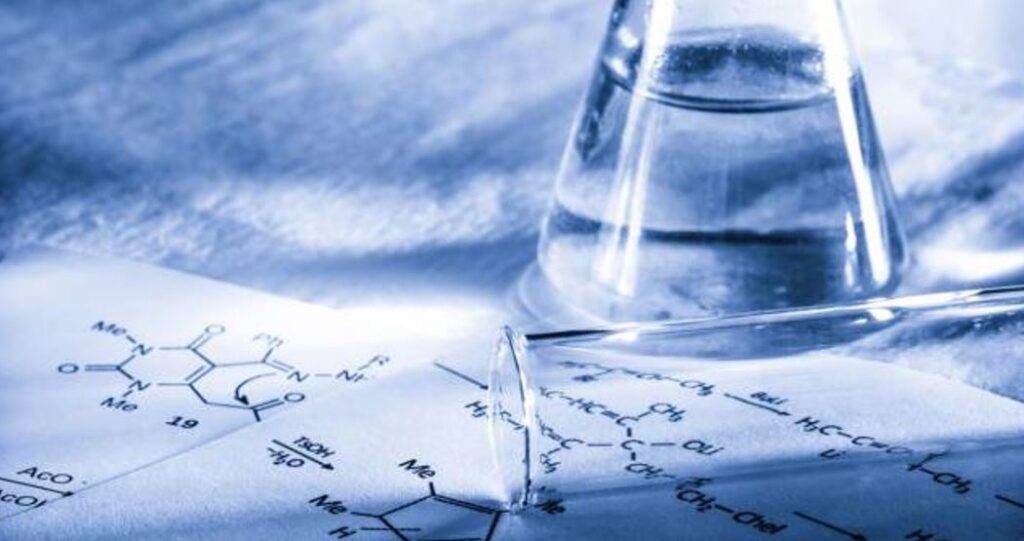
وتشمل العوامل الرئيسية التي تملي ترتيب وطريقة إضافة المتفاعلات ما يلي:
- الذوبان: غالبًا ما تضاف المتفاعلات عالية الذوبان في المذيب المختار أولاً لتسهيل الذوبان السريع والتوزيع المنتظم.
- التفاعلية: يمكن إضافة المركبات شديدة التفاعل أو غير المستقرة ببطء أو تحت ظروف محكومة لمنع التفاعلات الجانبية أو الانفجارات غير المرغوب فيها.
- تأثيرات التركيز: يمكن ضبط تركيز المتفاعلات عن طريق تغيير معدل الإضافة لتحسين حركية التفاعل.
- حساسية درجة الحرارة: تتم إضافة المتفاعلات التي تتطلب تحكم دقيق في درجة الحرارة بطريقة تحافظ على درجة حرارة التفاعل المطلوبة.
| خاصية المتفاعل | الاعتبار | مثال |
|---|---|---|
| الذوبان | ضمان الذوبان السريع والتوزيع المنتظم | إضافة قاعدة قابلة للذوبان مثل هيدروكسيد الصوديوم أولاً لتذوب في الماء |
| التفاعلية | منع التفاعلات الجانبية أو الانفجارات غير المرغوب فيها | إضافة كاشف شديد التفاعلية ببطء مثل t-BuLi تحت جو خامل |
| التركيز | تحسين حركية التفاعل عن طريق ضبط التركيز | إضافة كاشف محدد تدريجيًا للتحكم في معدل التفاعل |
| درجة الحرارة | الحفاظ على درجة حرارة التفاعل المطلوبة | إضافة المادة المتفاعلة التي تحفز التفاعل الطارد للحرارة ببطء لتجنب السخونة الزائدة |
من خلال التخطيط الدقيق لتسلسل الإضافة وشروطها، يمكن للباحثين تعزيز قابلية التكرار ومعدل نجاح تفاعلات التخليق العضوي.
المحفز أو السلائف المحفزة
تعد إضافة عامل حفاز أو سليفة حفازة خطوة حاسمة في العديد من تفاعلات التخليق العضوي. وعادة ما يتم إدخال هذه المواد بعد دمج المتفاعلات، مما يضمن أن تكون بيئة التفاعل مواتية لفعاليتها. يمكن إضافة المحفز أو السليفة بشكل مستقل أو خلطها مسبقًا مع مكونات أخرى لتعزيز نشاطها. هذا التوقيت مهم للغاية لأنه يسمح للعامل الحفاز بالتفاعل على النحو الأمثل مع المواد المتفاعلة، وبالتالي تسهيل التحول الكيميائي المطلوب.
في بعض الحالات، قد تحتاج السليفة الحفازة إلى تنشيطها من خلال عملية منفصلة، مثل التسخين أو إضافة كاشف معين، قبل أن تعمل بفعالية. وغالبًا ما يتم تنفيذ خطوة التنشيط هذه مباشرةً بعد خلط المواد المتفاعلة، مما يضمن أن يكون العامل الحفاز نشطًا بالكامل عند بدء التفاعل. يعتمد الاختيار بين إضافة المحفز وحده أو خلطه مسبقًا على المتطلبات المحددة للتفاعل وخصائص المحفز نفسه.
على سبيل المثال، في التفاعلات التي تتطلب تحكمًا دقيقًا في النشاط الحفاز، تسمح إضافة العامل الحفاز بشكل منفصل بإجراء تعديلات أكثر دقة. ومن ناحية أخرى، يمكن أن يؤدي الخلط المسبق للعامل الحفاز مع المكونات الأخرى إلى تبسيط إعداد التفاعل، مما يقلل من عدد الخطوات ومصادر الخطأ المحتملة. وبغض النظر عن الطريقة المختارة، فإن الهدف هو زيادة كفاءة التفاعل وانتقائيته إلى أقصى حد، مما يؤدي في النهاية إلى زيادة الإنتاجية وتحسين جودة المنتج.
درجة الحرارة أو عوامل التحكم
تلعب أجهزة وعوامل التحكم في درجة الحرارة دورًا محوريًا في نجاح تفاعلات التخليق العضوي. يتم تنشيط هذه الأدوات بشكل استراتيجي للحفاظ على ظروف التفاعل المثلى، مما يضمن سير العملية بسلاسة وكفاءة. إن تنشيط هذه الأجهزة والعوامل ليس عملية عشوائية؛ بل يتم التخطيط لها بدقة بناءً على المتطلبات المحددة للتفاعل.
على سبيل المثال، في التفاعلات التي تتطلب تنظيمًا دقيقًا لدرجة الحرارة، يتم استخدام أجهزة مثل ألواح التسخين وحمامات الزيت وسترات التسخين. يتم اختيار هذه الأدوات ليس فقط بناءً على ظروف التفاعل ولكن أيضًا على حجم ونوع وعاء التفاعل. ويضمن استخدام هذه الأجهزة بقاء درجة الحرارة ضمن النطاق المطلوب، مما يمنع أي تفاعلات جانبية غير مرغوب فيها أو تحلل المواد المتفاعلة.
وبالمثل، تُستخدم عوامل التحكم مثل المبردات والمشتتات الحرارية للتحكم في درجة الحرارة أثناء التفاعل. هذه العوامل مفيدة بشكل خاص في التفاعلات التي تولد حرارة كبيرة أو تتطلب تغيرات سريعة في درجة الحرارة. عن طريق امتصاص الحرارة أو تبديدها حسب الحاجة، تساعد هذه العوامل في الحفاظ على التفاعل عند درجة الحرارة المثلى، وبالتالي تعزيز إنتاجية ونقاء المنتج النهائي.
باختصار، يعد تنشيط أجهزة وعوامل التحكم في درجة الحرارة جانبًا مهمًا من جوانب التخليق العضوي. فهو يضمن استمرار التفاعل في ظل أفضل الظروف، مما يؤدي إلى زيادة المردود وتحسين جودة المنتج.
تبريد أو تعليق التفاعلات الكيميائية
التبريد السريع
تُعد تقنيات التبريد السريع، مثل حمامات الثلج والنيتروجين السائل، استراتيجيات أساسية لإيقاف التفاعلات الكيميائية عن طريق خفض درجة الحرارة بشكل كبير. هذه الأساليب فعالة بشكل خاص في التخليق العضوي، حيث يعد التحكم في معدلات التفاعل ومنع التفاعلات الجانبية غير المرغوب فيها أمرًا بالغ الأهمية.
-
حمامات الثلج: يتضمن استخدام حمامات الثلج غمر وعاء التفاعل في خليط من الثلج والماء. تعمل هذه الطريقة على خفض درجة الحرارة بسرعة إلى حوالي 0 درجة مئوية، مما يؤدي إلى إبطاء التفاعل أو إيقافه بشكل فعال. تُستخدم حمامات الثلج بشكل شائع في التفاعلات التي تتطلب تبريدًا فوريًا لمنع الأكسدة الزائدة أو تحلل المتفاعلات.
-
النيتروجين السائل: للتحكم بدرجة حرارة أكثر تطرفًا، يمكن استخدام النيتروجين السائل. يمكن لهذه الطريقة أن تخفض درجة الحرارة إلى -196 درجة مئوية، مما يؤدي إلى تجميد خليط التفاعل بشكل فعال وإيقاف التفاعل بشكل شبه فوري. ويُعد النيتروجين السائل مفيدًا بشكل خاص للتفاعلات الطاردة للحرارة بشكل كبير أو لتثبيت المواد الوسيطة غير المستقرة التي لا يمكن الحفاظ عليها في درجات حرارة أعلى.
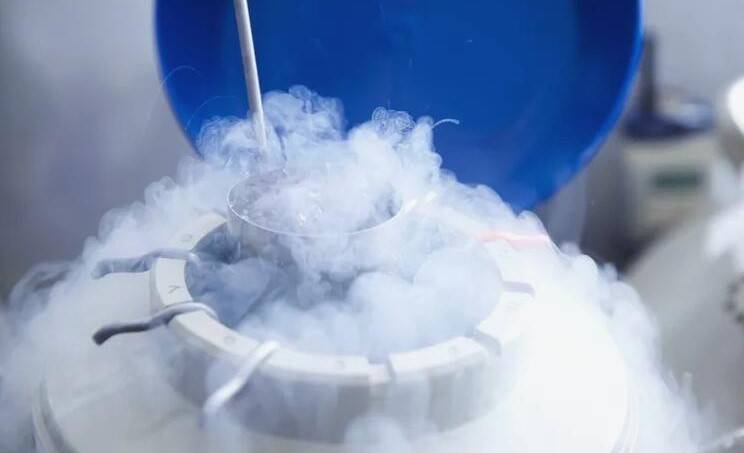
| طريقة التبريد | نطاق درجة الحرارة | الاستخدام |
|---|---|---|
| حمامات الثلج | 0°C | التبريد العام، ومنع الأكسدة الزائدة، وتثبيت المواد الوسيطة |
| النيتروجين السائل | -196°C | التفاعلات الطاردة للحرارة العالية وتثبيت المواد الوسيطة غير المستقرة |
لا توقف طرق التبريد السريع هذه التفاعلات الجارية فحسب، بل تحافظ أيضًا على حالة خليط التفاعل، مما يسمح بإجراء مزيد من التحليل أو إعادة بدء التفاعل في ظل ظروف محكومة.
إضافة عامل التبريد
تؤدي عوامل التبريد دورًا محوريًا في وقف التفاعلات الكيميائية، غالبًا عن طريق إدخال مادة تتفاعل كيميائيًا مع المتفاعلات. يتم اختيار هذه العوامل عادةً بناءً على قدرتها على معادلة الأنواع النشطة أو الارتباط بها بسرعة، وبالتالي منع المزيد من تطور التفاعل. على سبيل المثال، في تفاعلات الحمض والقاعدة، يمكن إضافة قاعدة لمعادلة فائض الحمض، مما يوقف التفاعل بشكل فعال.
في التفاعلات الأكثر تعقيدًا، مثل تلك التي تتضمن أنواعًا جذرية، يمكن استخدام عوامل إخماد مثل الكحول أو مركبات النيترو. تتفاعل هذه العوامل مع الجذور وتحولها إلى نواتج مستقرة وبالتالي تنهي التفاعل الجذري المتسلسل. ويُعد اختيار عامل التبريد أمرًا بالغ الأهمية لأنه يجب ألا يوقف التفاعل فحسب، بل يجب أيضًا ألا يُدخل تفاعلات جانبية جديدة أو شوائب يمكن أن تعقد خطوات التنقية اللاحقة.
| عامل التبريد | نوع التفاعل النموذجي | الآلية |
|---|---|---|
| الكحوليات | التفاعلات الجذرية | الإنهاء الجذري |
| القواعد (مثل هيدروكسيد الصوديوم) | تفاعلات الحمض والقاعدة | التحييد |
| مركبات النيترو | التفاعلات الجذرية | محاصرة الجذور |
غالباً ما تكون إضافة عامل التبريد قراراً استراتيجياً يتم اتخاذه خلال مرحلة التصميم التجريبي. ويتطلب دراسة دقيقة لظروف التفاعل وطبيعة المتفاعلات والنتيجة المرجوة. من خلال فهم المتطلبات المحددة لكل تفاعل، يمكن للكيميائيين اختيار عامل التبريد الأنسب، مما يضمن التحكم في التفاعل بكفاءة وفعالية.
إضافة المواد الخاملة
تلعب الغازات أو المذيبات الخاملة دورًا حاسمًا في تخفيف المواد المتفاعلة واستقرار بيئة التفاعل. ومن خلال إدخال غازات خاملة مثل النيتروجين أو الأرجون، يتم خفض تركيز الأنواع المتفاعلة بشكل فعال، وبالتالي تقليل احتمال حدوث تفاعلات جانبية غير مرغوب فيها. وتعد هذه الطريقة مفيدة بشكل خاص في التفاعلات الحساسة للهواء حيث يجب استبعاد الأكسجين والرطوبة بشكل صارم.
وبالمثل، يمكن أن تؤثر إضافة المذيبات الخاملة بشكل كبير على ديناميكيات التفاعل. لا تؤدي المذيبات مثل الهكسان أو التولوين أو THF إلى تخفيف المتفاعلات فحسب، بل تعدل أيضًا وسط التفاعل، مما يؤثر على عوامل مثل القطبية واللزوجة ودرجة الحرارة. ويمكن أن يؤدي ذلك إلى تعزيز استقرار التفاعل والتحكم فيه، خاصةً في ظروف درجات الحرارة العالية أو الضغط العالي حيث يمكن أن يصبح التفاعل غير مستقر أو يهرب.
| المادة الخاملة | الدور في التفاعل | مثال على الاستخدام |
|---|---|---|
| الغازات الخاملة | تخفيف المتفاعلات، واستبعاد الهواء والرطوبة | النيتروجين في التفاعلات الحساسة للهواء |
| المذيبات الخاملة | تعديل وسط التفاعل، تثبيت التفاعل | التولوين في التفاعلات عالية الضغط |
وبالتالي فإن الاستخدام الحكيم لهذه المواد الخاملة يمكن أن يكون مفيدًا في تحقيق عملية تخليق محكومة وفعالة.
الترشيح أو الترسيب
في سياق التخليق العضوي، يعد فصل المواد المتفاعلة خطوة حاسمة تحدد غالبًا نقاء المنتج النهائي وعائده. وكثيرًا ما يتحقق هذا الفصل من خلال الترشيح أو الترسيب حيث يقدم كل منهما مزايا فريدة اعتمادًا على طبيعة المتفاعلات والنتيجة المرجوة.
الترشيح مفيد بشكل خاص لفصل النواتج الصلبة عن المتفاعلات السائلة أو المذيبات. وهو ينطوي على استخدام وسائط الترشيح، مثل ورق الترشيح أو الألياف الزجاجية الدقيقة، لحبس الجسيمات الصلبة مع السماح بمرور المرحلة السائلة. وتعد هذه الطريقة فعالة للغاية في التفاعلات التي يشكل فيها المنتج راسبًا صلبًا، مما يسهل عزله.
من ناحية أخرى الترسيب هي تقنية يتم فيها تكوين منتج صلب من محلول، غالبًا عن طريق تغيير ظروف الذوبان. ويمكن تحقيق ذلك عن طريق تغيير الأس الهيدروجيني أو درجة الحرارة أو إضافة عامل ترسيب. ثم يُفصل الراسب عادةً عن المحلول من خلال الترشيح أو الطرد المركزي أو الصب. يكون الترسيب فعالاً بشكل خاص في التفاعلات التي يكون فيها المنتج قابلاً للذوبان في ظروف التفاعل الأولية ولكنه يصبح غير قابل للذوبان عند تعديل هذه الظروف.
تعد كلتا الطريقتين جزءًا لا يتجزأ من مرحلة ما بعد المعالجة للتخليق العضوي، مما يضمن خلو المنتج النهائي من الشوائب وأن يكون في شكل مناسب لمزيد من التحليل أو الاستخدام.
المعالجة اللاحقة لتفاعلات التخليق الكيميائي
إزالة المذيب
تعد إزالة المذيبات بعد التفاعل خطوة حاسمة في التخليق العضوي لعزل المنتج المطلوب. يتم استخدام طرق مختلفة لتحقيق ذلك، كل منها يناسب ظروف التفاعل وخصائص المذيبات المختلفة.
-
التبخير الدوار: تُستخدم هذه التقنية عادةً مع المذيبات ذات نقاط الغليان المنخفضة نسبيًا. وهي تتضمن تدوير دوران دورق التفاعل عند درجة حرارة منخفضة تحت التفريغ، مما يسهل التوزيع المتساوي للمذيب وتبخره اللاحق.
-
التجفيف بالتفريغ: مثالي لإزالة المذيبات الحساسة للحرارة، ويستخدم التجفيف بالتفريغ الهوائي ضغطًا منخفضًا لخفض درجة غليان المذيب، مما يسمح له بالتبخر دون تسخين مفرط.
-
التطهير بالنيتروجين: هذه الطريقة مفيدة بشكل خاص للمذيبات المتطايرة. من خلال تمرير غاز النيتروجين باستمرار عبر خليط التفاعل، يتم كنس المذيب بعيدًا تاركًا المنتج خلفه.
-
التجفيف بالتجميد: تتضمن هذه العملية المعروفة أيضًا باسم التجفيف بالتجميد، تجميد خليط التفاعل ثم تقليل الضغط للسماح للمذيب المتجمد بالتسامي مباشرةً من الطور الصلب إلى الطور الغازي، متجاوزًا الطور السائل.
لكل طريقة من هذه الطرق مزاياها الخاصة ويتم اختيارها بناءً على المتطلبات المحددة للتفاعل، مثل تطاير المذيب وحساسية المنتج للحرارة وحجم التخليق.
التبلور
تعد التبلور خطوة حاسمة في المعالجة اللاحقة لتفاعلات التخليق الكيميائي، وتهدف إلى تنقية وعزل المنتج المطلوب في شكل صلب. يمكن تحقيق هذه العملية من خلال طرق مختلفة، في المقام الأول عن طريق التلاعب بدرجة حرارة المحلول أو عن طريق إدخال مذيبات إضافية.

التحكم في درجة حرارة المحلول
تتمثل إحدى أكثر الطرق فعالية لتحفيز التبلور في التحكم بعناية في درجة حرارة المحلول. يمكن القيام بذلك إما عن طريق تبريد المحلول لخفض درجة حرارته أو عن طريق تسخينه لزيادة قابلية ذوبان المواد المذابة. على سبيل المثال، يمكن أن يؤدي تبريد محلول مفرط التشبع إلى أن تتسبب جزيئات المذاب في ترتيب نفسها في شبكة بلورية، مما يؤدي إلى تكوين بلورات. وعلى العكس من ذلك، يمكن أن يؤدي تسخين المحلول أحيانًا إلى إذابة الشوائب، مما يسهل الحصول على بلورات نقية عند التبريد اللاحق.
إضافة المذيبات
تتضمن طريقة أخرى للتبلور إضافة مذيبات إلى خليط التفاعل. تكون هذه الطريقة مفيدة بشكل خاص عندما تكون قابلية ذوبان المنتج في المذيب الأصلي عالية جدًا لتسهيل التبلور. بإضافة مذيب غير قابل للامتزاج يقلل من ذوبانية المنتج، يمكن إجبار المذاب على الخروج من المحلول، مما يؤدي إلى التبلور. على سبيل المثال، غالبًا ما تؤدي إضافة الإيثانول إلى محلول مائي إلى ترسيب مركبات عضوية أقل قابلية للذوبان في الإيثانول.
التقنيات والاعتبارات
- البذر: يمكن أن يساعد إدخال كمية صغيرة من المواد البلورية (بلورات البذور) في بدء عملية التبلور والتحكم فيها.
- التحريك: التقليب الخفيف يمكن أن يساعد في التوزيع المنتظم لجزيئات المذاب، مما يعزز تكوين بلورات أكبر وأكثر اتساقًا.
- الوقت والصبر: غالبًا ما يؤدي إتاحة الوقت الكافي لعملية التبلور بشكل طبيعي إلى الحصول على بلورات عالية الجودة.
من خلال اختيار هذه التقنيات والجمع بينها بعناية، يمكن للباحثين تحقيق التبلور بكفاءة وفعالية، مما يضمن نقاء وجودة المنتج النهائي.
اللب
اللب هو تقنية تنقية تستفيد من الاختلافات في ذوبان المركبات في مذيب واحد. هذه الطريقة فعالة بشكل خاص لفصل المخاليط حيث يكون للمنتج المستهدف خصائص ذوبان مميزة مقارنة بالشوائب. تتضمن العملية الذوبان الانتقائي والترسيب أو الترشيح اللاحق للمركب المرغوب فيه، استنادًا إلى خصائص الذوبان.
على سبيل المثال، إذا أنتج التفاعل خليطًا يكون فيه المنتج المرغوب أقل ذوبانًا في مذيب معين في درجة حرارة الغرفة ولكنه يصبح أكثر ذوبانًا مع زيادة درجة الحرارة، يمكن استخدام عملية اللب. عن طريق تسخين الخليط لإذابة المنتج ثم تبريده ببطء، يمكن ترسيب المركب المرغوب فيه بينما تبقى الشوائب في المحلول. تشبه هذه التقنية التبلور ولكنها أكثر تنوعًا لأنها لا تتطلب تكوين بلورات.
وغالبًا ما يستخدم اللب في خطوات ما بعد المعالجة في تفاعلات التخليق العضوي، حيث يكون الهدف هو تحقيق نقاء عالٍ للمنتج النهائي. كما أنه يكمل طرق التنقية الأخرى مثل التقطير والكروماتوغرافيا حيث يوفر طريقة مباشرة وفعالة للتعامل مع المخاليط ذات الاختلافات الكبيرة في الذوبان. يعد اختيار المذيب أمرًا حاسمًا في عملية التنقية، حيث يجب أن يذيب المركب المستهدف بفعالية في ظل ظروف محددة مع ترك الشوائب.
فيما يلي جدول يلخص الاعتبارات الرئيسية لاختيار المذيب في عملية اللب:
| العامل | الاعتبارات |
|---|---|
| الذوبان | يجب أن يذيب المذيب المركب المستهدف تحت الظروف المختارة. |
| ذوبان الشوائب | يجب أن تظل الشوائب غير قابلة للذوبان أو أقل قابلية للذوبان في نفس الظروف. |
| نطاق درجة الحرارة | يجب أن تتغير ذوبانية المذيب بشكل كبير مع درجة الحرارة. |
| السلامة والمناولة | يجب أن يكون المذيب آمنًا للاستخدام ويمكن التحكم فيه بسهولة. |
| التكلفة | يجب أن يكون المذيب فعالاً من حيث التكلفة ومتوفر بسهولة. |
من خلال اختيار المذيب بعناية والتحكم في الظروف، يمكن أن ينتج عن التقطير منتجات عالية النقاء، مما يجعله أداة أساسية في ترسانة الكيميائي العضوي.
التقطير
التقطير هو تقنية عريقة تُستخدم لفصل مكونات المخاليط السائلة عن طريق استغلال درجات غليانها المختلفة. تنطوي هذه العملية على دورات تسخين وتبريد انتقائية للغاية، والتي تتلاعب بالخصائص الديناميكية الحرارية لمكونات السوائل داخل المحلول. وتشجع هذه المنهجية المخاليط على الفصل من خلال سلسلة من الغليان والتبخر والتكثيف.
عملية التقطير ليست تفاعلًا كيميائيًا بل هي تقنية فصل فيزيائي. وهي تستفيد من التباين في درجات الغليان بين مكونات خليط سائل، مما يدفع بمكون أو أكثر إلى الحالة الغازية. يسمح هذا التحول الانتقائي بعزل مكونات محددة، إما لزيادة تركيزها في الخليط أو للحصول على مواد شبه نقية.
وللتقطير طيف واسع من التطبيقات، ولكن ربما يرتبط التقطير تقليديًا باستخدامين أساسيين: تعزيز محتوى الكحول في المشروبات المخمرة وتنقية مصادر المياه لضمان الاستهلاك البشري الآمن. في المختبر، يتم تنفيذ عملية التقطير باستخدام تجهيزات متخصصة تشمل أجهزة مصممة لتسهيل التسخين والتبريد المتحكم فيه اللازمين للفصل الفعال.
على سبيل المثال، في سياق التخليق العضوي، يمكن أن يكون التقطير خطوة حاسمة في مرحلة ما بعد المعالجة لفصل نواتج التفاعل وتنقيتها. وغالبًا ما يتم اختيار طريقة التقطير وجهاز التقطير وفقًا للخصائص المحددة للمكونات المراد فصلها، مما يضمن أن تكون العملية فعالة وكفؤة على حد سواء.
الفصل اللوني
يعد الفصل اللوني تقنية حاسمة في مرحلة ما بعد المعالجة في تفاعلات التخليق الكيميائي، حيث تلعب دورًا محوريًا في فصل المكونات وتحديدها. وتكتسب هذه الطريقة قيمة خاصة عند التعامل مع المخاليط المعقدة، حيث قد تقصر تقنيات الفصل التقليدية.
أنواع الفصل اللوني
- الفصل اللوني الغازي (GC): مثالي للمركبات المتطايرة، ويستخدم الكروماتوغرافيا الغازية غازًا ناقلًا لنقل جزيئات العينة عبر مرحلة ثابتة، مما يسمح بالفصل الدقيق بناءً على الاختلافات في التطاير والتقارب مع المرحلة الثابتة.
- الكروماتوغرافيا السائلة (LC): مناسب للمركبات غير المتطايرة وغير المستقرة حراريًا، ويستخدم الكروماتوغرافيا السائلة (LC) طورًا متحركًا سائلًا لفصل المكونات بناءً على تفاعلاتها مع الطور الثابت.
التطبيقات في التخليق العضوي
- التنقية: يُستخدم الفصل اللوني على نطاق واسع لتنقية المركبات المركّبة وإزالة الشوائب وضمان أن المنتج النهائي يفي بمعايير النقاء المطلوبة.
- تحديد الهوية: من خلال مقارنة أوقات الاستبقاء والأطياف مع المعايير المعروفة، يساعد الفصل اللوني في تحديد المكونات غير المعروفة في الخليط.
المزايا
- الانتقائية: توفر تقنيات الكروماتوغرافيا انتقائية عالية، مما يتيح فصل المركبات وثيقة الصلة التي قد يصعب تمييزها باستخدام طرق أخرى.
- الحساسية: توفر أجهزة الكروماتوغرافيا الحديثة المزودة بكاشفات مثل الأشعة فوق البنفسجية والأشعة المرئية وقياس الطيف الكتلي والتأين باللهب حدود كشف عالية الحساسية.
وباختصار، يبرز الفصل الكروماتوغرافي كأداة لا غنى عنها في ترسانة التخليق العضوي، حيث يوفر نهجًا قويًا ومتعدد الاستخدامات لمهام الفصل وتحديد الهوية.
الاستخلاص
يعد الاستخلاص الانتقائي للنواتج باستخدام المذيبات خطوة حاسمة في تفاعلات التخليق الكيميائي بعد المعالجة. تستفيد هذه التقنية من قابلية الذوبان المختلفة للمركبات في المذيبات المختلفة لتحقيق الفصل الفعال. يعد اختيار المذيب أمرًا بالغ الأهمية، لأنه يؤثر بشكل مباشر على كفاءة عملية الاستخلاص. على سبيل المثال، غالبًا ما تكون المذيبات مثل الأثير وDMF وTHF مفضلة بسبب قدرتها على إذابة مركبات معينة بشكل انتقائي، وبالتالي تسهيل عزل المنتج المطلوب.
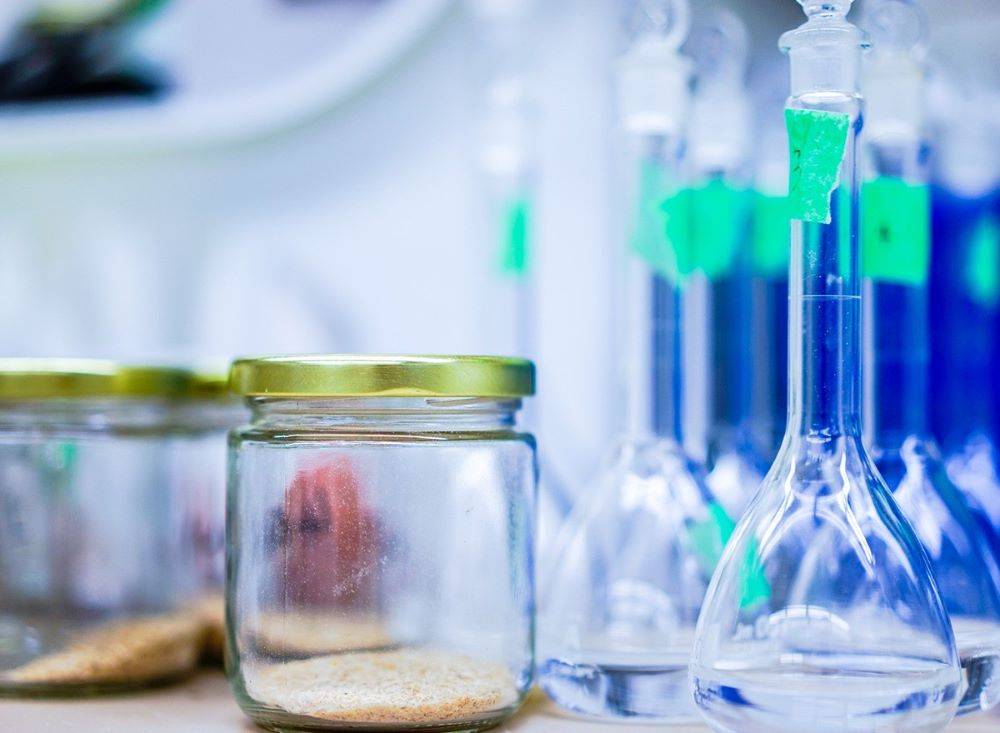
تتضمن العملية عادةً الخطوات التالية:
- اختيار المذيب: يتم اختيار المذيب بناءً على مدى توافقه مع المركب المستهدف وقدرته على إذابة الشوائب بفعالية أقل.
- إجراء الاستخلاص: يتم رج الخليط بالمذيب المختار، مما يسمح للمركب المستهدف بالانتقال إلى مرحلة المذيب.
- الفصل: ثم يتم فصل الطبقات بعد ذلك باستخدام تقنيات مثل الصب أو الطرد المركزي، اعتمادًا على اختلافات الكثافة بين المذيب والمخلوط.
هذه الطريقة مفيدة بشكل خاص لفصل المركبات العضوية من المخاليط المائية أو لتنقية النواتج من مخاليط التفاعل. يمكن تعزيز فعالية الاستخلاص عن طريق إجراء عمليات استخلاص متعددة، أو استخدام مذيبات مختلفة، أو تعديل الأس الهيدروجيني للخليط لتغيير قابلية الذوبان.
من خلال اختيار المذيبات ومعالجتها بعناية، يمكن للباحثين تحقيق عمليات استخلاص انتقائية وفعالة للغاية، مما يضمن نقاء المنتج النهائي وعائده.
الترشيح
الترشيح هو خطوة حاسمة في المعالجة اللاحقة لتفاعلات التخليق الكيميائي، ويهدف إلى فصل الجسيمات الصلبة عن المراحل السائلة أو الغازية. هذه العملية ضرورية لتنقية المنتج النهائي وضمان جودته. ويعتمد اختيار وسائط الترشيح على عدة عوامل، بما في ذلك حجم الجسيمات وطبيعة المذيب والنقاء المطلوب للمنتج.
أنواع وسائط الترشيح
تتوفر وسائط ترشيح مختلفة، كل منها مناسب لأنواع مختلفة من الجسيمات وظروف التفاعل:
- المرشحات الورقية: مثالية للجسيمات الدقيقة والتطبيقات منخفضة الضغط. وهي تستخدم عادة في الإعدادات المختبرية.
- مرشحات الألياف الزجاجية: فعالة لتصفية الجسيمات الدقيقة جداً ويمكنها تحمل درجات الحرارة العالية.
- المرشحات الغشائية: متوفرة بأحجام مسام مختلفة، وتستخدم هذه المرشحات لفصل الجسيمات الدقيقة وغالبًا ما تستخدم في الترشيح المعقم.
- المرشحات الرملية: تُستخدم هذه المرشحات في التطبيقات واسعة النطاق، ويمكنها التعامل مع معدلات تدفق عالية وفعالة للجسيمات الكبيرة.
تقنيات الترشيح
يمكن استخدام عدة تقنيات لتحسين عملية الترشيح:
- الترشيح بالجاذبية: بسيطة وشائعة الاستخدام، تعتمد هذه الطريقة على الجاذبية لسحب السائل عبر وسيط المرشح.
- الترشيح بالتفريغ: أسرع من الترشيح بالجاذبية، تستخدم هذه التقنية التفريغ لسحب السائل عبر وسيط المرشح، مما يقلل من وقت الترشيح.
- الترشيح بالطرد المركزي: تستخدم قوة الطرد المركزي لفصل الجسيمات عن السائل، وغالباً ما تستخدم للتطبيقات ذات الحجم الكبير.
التطبيقات في التخليق العضوي
في التخليق العضوي، يستخدم الترشيح لأغراض مختلفة، بما في ذلك:
- عزل المنتجات البلورية: بعد التبلور، يُستخدم الترشيح لفصل المنتج الصلب عن السائل الأم.
- إزالة المحفزات: في التفاعلات التحفيزية، يساعد الترشيح في إزالة المحفز من خليط التفاعل.
- تنقية المخاليط: يمكن استخدام الترشيح لتنقية مخاليط التفاعل عن طريق إزالة الشوائب والمنتجات الثانوية.
من خلال اختيار تقنية الترشيح والوسائط المناسبة بعناية، يمكن للباحثين ضمان الفصل الفعال للجسيمات الصلبة، وبالتالي تعزيز نقاء وجودة منتجاتهم النهائية.
امتزاز الكربون المنشط
يعد امتزاز الكربون المنشط تقنية حاسمة لما بعد المعالجة في التخليق العضوي، وهي فعالة بشكل خاص لإزالة الشوائب العضوية من مخاليط التفاعل. وتستفيد هذه الطريقة من البنية المسامية للغاية للكربون المنشط، والتي توفر مساحة سطح واسعة للامتزاز. وتتضمن العملية تمرير خليط التفاعل من خلال طبقة من الكربون المنشط، حيث يتم احتجاز الملوثات العضوية بشكل انتقائي، تاركًا وراءه منتجًا منقى.
تتمثل إحدى المزايا الرئيسية لامتصاص الكربون المنشط في تعدد استخداماته. ويمكن تطبيقه على مجموعة واسعة من المركبات العضوية، مما يجعله مناسبًا لعمليات التخليق المختلفة. بالإضافة إلى ذلك، الكربون المنشط خامل كيميائيًا، مما يضمن عدم تفاعله مع المنتج المستهدف أو إدخال شوائب جديدة.
وعلاوة على ذلك، يمكن تعزيز فعالية امتزاز الكربون المنشط عن طريق تعديل المعلمات مثل وقت التلامس ودرجة الحرارة والنوع المحدد للكربون المنشط المستخدم. على سبيل المثال، تسمح زيادة وقت التلامس بامتصاص المزيد من الملوثات، في حين أن تغيير درجة الحرارة يمكن أن يحسن عملية الامتزاز لأنواع مختلفة من المواد العضوية.
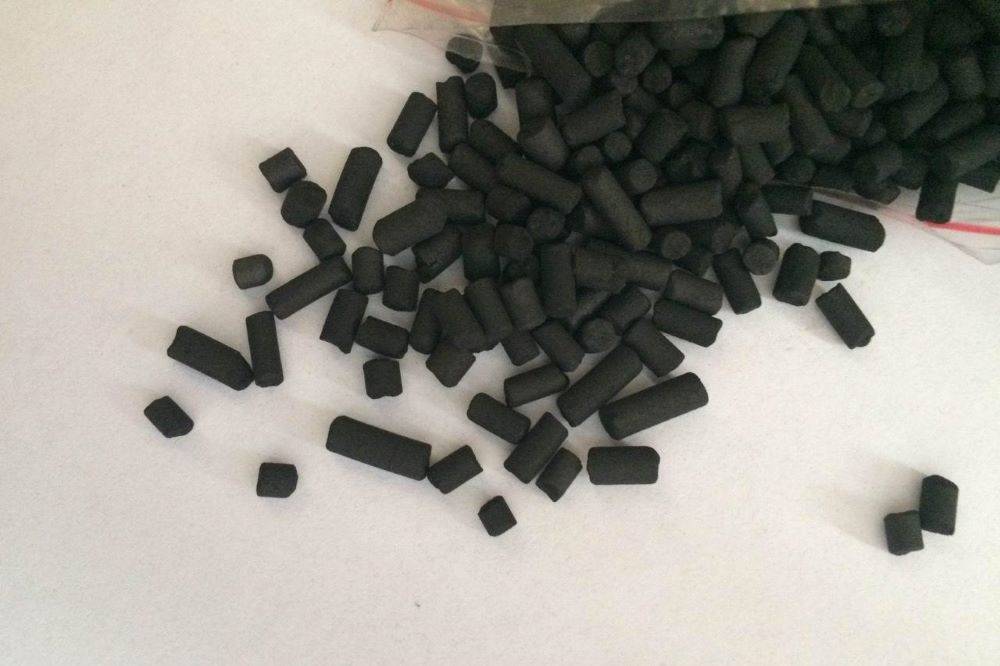
باختصار، يعد امتزاز الكربون المنشط أداة قوية لتكرير منتجات التخليق العضوي عن طريق إزالة الشوائب العضوية بكفاءة، وبالتالي تعزيز الجودة والنقاء الكلي للمنتج النهائي.
الغسيل
الغسل هو خطوة حاسمة في المعالجة اللاحقة لتفاعلات التخليق الكيميائي، ويهدف إلى إزالة الشوائب وضبط نقاء المنتج النهائي. تتضمن هذه العملية استخدام المذيبات لشطف المنتج، مما يؤدي إلى التخلص الفعال من المتفاعلات المتبقية والمنتجات الثانوية والملوثات الأخرى التي قد تؤثر على جودة المنتج وفعاليته.
الاعتبارات الرئيسية في الغسيل
-
اختيار المذيبات:
- القطبية وقابلية الذوبان: يعد اختيار المذيب أمرًا بالغ الأهمية حيث يجب أن يكون قادرًا على إذابة الشوائب دون التأثير على المنتج. تشمل المذيبات الشائعة الماء والإيثانول والأسيتون، ويتم اختيارها بناءً على خصائص الذوبان.
- التقلب: يُفضل استخدام المذيبات المتطايرة حيث يمكن إزالتها بسهولة بعد الغسيل، مما يقلل من مخاطر بقايا المذيبات.
-
التقنيات:
- الغسل المتسلسل: يتضمن ذلك غسلات متعددة بمذيب جديد لضمان الإزالة الشاملة للشوائب.
- الغسل بالتيار المعاكس: طريقة أكثر كفاءة حيث يتدفق المذيب في الاتجاه المعاكس للمنتج، مما يعزز إزالة الشوائب.
-
المراقبة والتحكم:
- ضبط الأس الهيدروجيني: يمكن ضبط الأس الهيدروجيني لمحلول الغسيل لتحسين إزالة أنواع معينة من الشوائب.
- التحكم في درجة الحرارة: يمكن أن يؤدي التحكم في درجة حرارة محلول الغسيل إلى تحسين قابلية ذوبان الشوائب وتعزيز كفاءة الغسيل.
فوائد الغسيل الفعال
- تحسين النقاء: يضمن الغسيل الفعال أن المنتج النهائي يفي بمعايير النقاء المطلوبة، مما يعزز جودته الإجمالية.
- تعزيز الاستقرار: يمكن أن تؤدي إزالة الشوائب إلى تحسين ثبات المنتج وعمره التخزيني.
- الامتثال التنظيمي: ضمان خلو المنتج من الملوثات الضارة أمر ضروري لتلبية المتطلبات التنظيمية ومعايير السلامة.
من خلال اختيار المذيبات والتقنيات المناسبة بعناية، ومراقبة عملية الغسيل، يمكن للباحثين الحصول على منتجات عالية النقاء مناسبة لمزيد من التحليل أو الاستخدام في تطبيقات مختلفة.
المنتجات ذات الصلة
- مفاعل مفاعل ضغط عالي من الفولاذ المقاوم للصدأ للمختبر
- بوتقة تبخير للمواد العضوية
- مفاعل الأوتوكلاف عالي الضغط للمختبرات للتخليق المائي الحراري
- مفاعلات الضغط العالي القابلة للتخصيص للتطبيقات العلمية والصناعية المتقدمة

